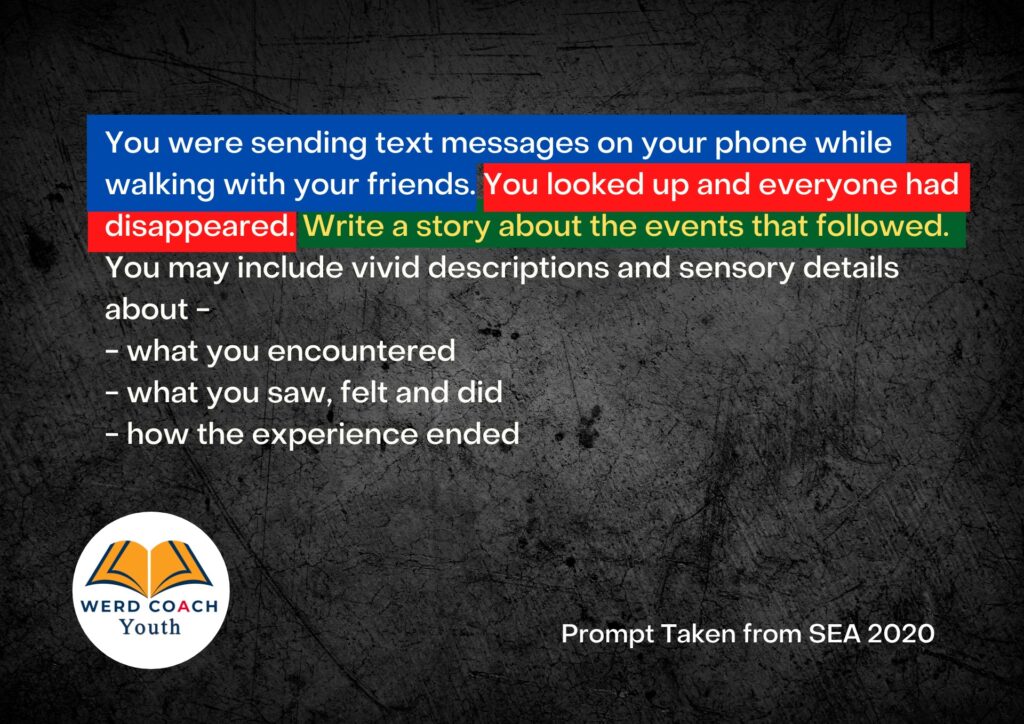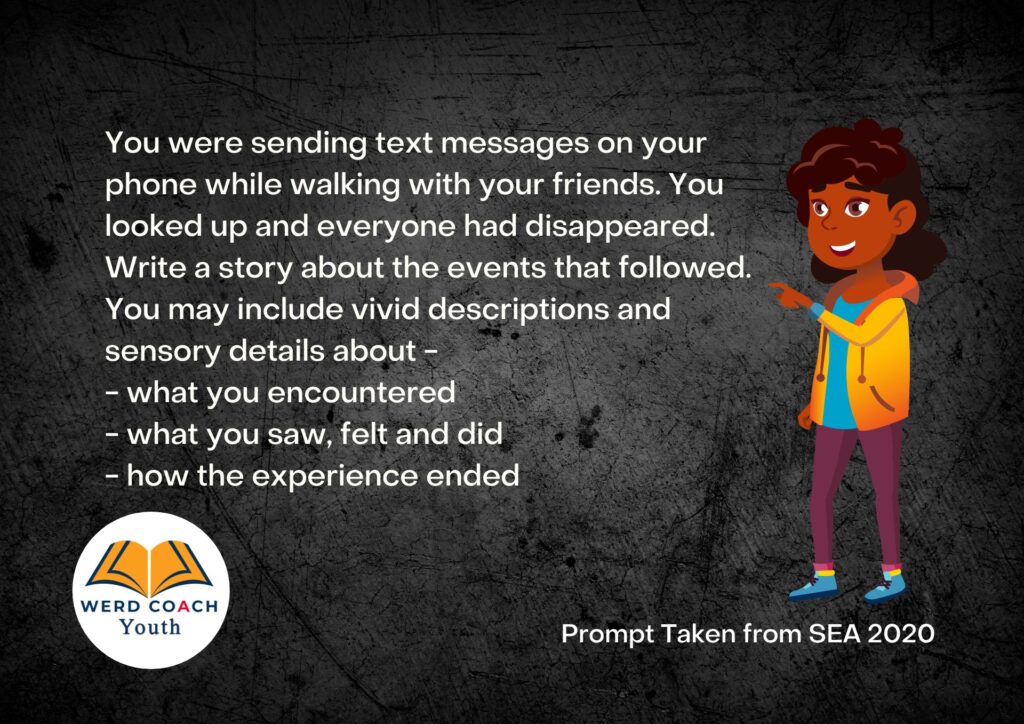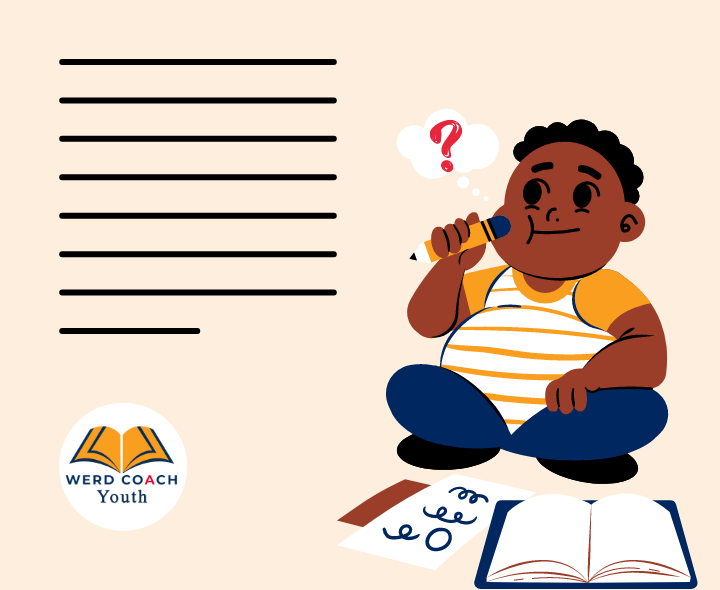How do you begin a story when the prompt says, “Write about the events that follow”? A few months ago, we posted about understanding writing prompts. It’s the first step in writing a great narrative.
In this post, we’re expanding on those ideas to answer a specific question – “How do you start a narrative when the prompt says ‘Write about the events that follow?” Before we get to the answer, however, you should know how the average prompt is constructed. Let’s take a look at one of the SEA 2020 prompts.
Note: Not all prompts will be like this one, but the content is pretty standard.

Review of SEA 2020 Narrative Prompt
In this prompt, you can clearly see four separate details.
The Context – Highlighted in Blue
The Situation – Highlighted in Red
The Directive Part A – Highlighted in Green and Written in Yellow
The Directive Part B – Not Highlighted
The Context tells readers what’s going on. Usually it includes the characters and partial information to guide background details.
The Situation provides details about the start of the conflict. This information isn’t always in a prompt, but when it is young writers need to pay special attention to what it says.
The Directive Part A tells writers what the story should be about. In this instance, writers are being asked to tell a story about what happens after the incident noted in the prompt.
Young writers could be asked to write about different aspects of the story. For example, they could be asked to write about the experience itself, or even how the characters got into the situation in the first place (what led up to the events of the prompt).
The Directive Part B is a standard guide that reminds young writers that it’s a narrative they’re writing and what type of vivid descriptions and sensory details to include.

Ok, so now we’re on to story beginnings. We pointed out what goes into an introduction when we discussed the 5-paragraph Story Structure in this post. There’s a standard format of hook, introduce character, give character a goal, and describe setting that must be included. But what does that look like in this type of story?
Let’s break it down into three points:
1. Since the prompt already gave the context, it’s wise to include some of those details in your introduction. Don’t expect the reader to be going back to the prompt to get the beginning of the story. Young writers have to give the beginning still.
2. Add a few details to support the idea with descriptive language. So, tell readers where you were going with your friends and that you were concentrating on your phone, texting. Maybe even hint at what and who you were texting.
3. This prompt also indicates the complication. The complication is the first problem that starts the conflict, so it’s important to include this detail. What the prompt doesn’t tell you is what your reaction is, and that’s where you would add in details to expand on the situation with descriptive and vivid language. That would be your introduction.
From there, most of the story would be exploring where your friends were, how you found them again, and what happened to them. And, all of this within a plot that builds the excitement and emotional reactions before solving the problem.

